
After so much rain for autumn 2019, it seems likely that there will be more UK flooding. How to Prepare, when to Act and how to Survive using all the warnings and information available.
When the 2019 National Flood Awareness campaign was issued earlier this year, I’m sure most people never expected such a wet autumn. Whether that was farmers, council workers, the Fire & Rescue teams, people in the flood-hit parts of central Britain or even the Environment Agencies. The campaign aims to get people thinking about what to do to protect themselves and their property in a flood. This has been brought to the forefront of people’s minds and lives over recent weeks with the endless rain and widespread flooding events.
The key point of the campaign looked at a simple Prepare, Act, Survive plan. This included a call to action for those living in a flood risk area, what to do when flooding occurs and how to prepare beforehand.
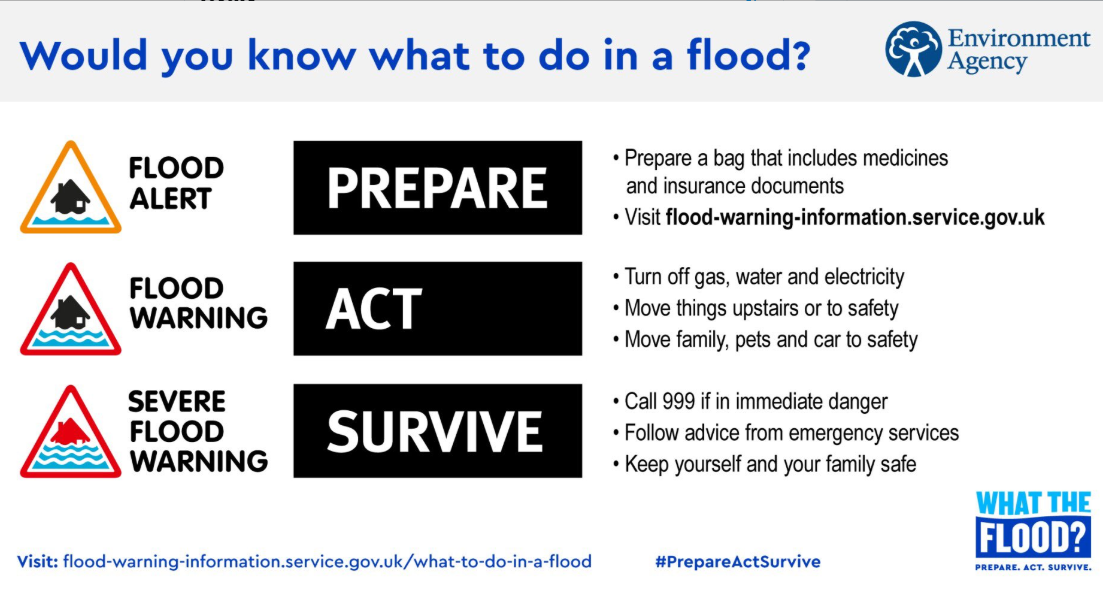
Since the mid-eighteenth century, England’s winter rainfall has increased. Today, climate change is accelerating and it’s easy to feel overwhelmed by information. Signing up for flood warnings, and learning what they mean, is a quick and simple thing you can do today Emma Howard Boyd, Environment Agency Chair
1. The main call has been to get people to sign up for the national flood warning services. This is based on postcodes so will work for your home address but maybe not your workplace or a UK holiday destination. Prepare
2. To create your own flood plan and share it with your household, so that if flooding does begin, everyone is familiar with what to do to help. Prepare then Act
3. Understand weather and flood warnings, if you know what they mean and how they are put together it can help wherever you may be in Britain and ally worries after flood events. Prepare
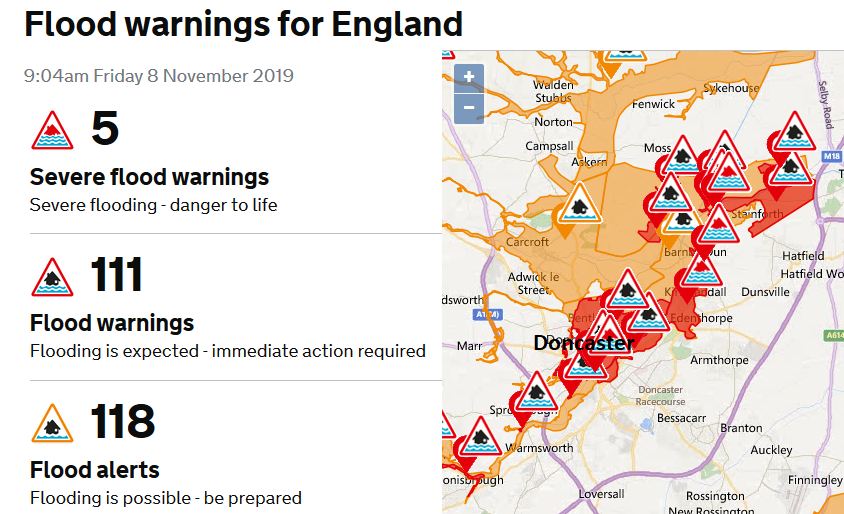
“The campaign also warns about the risks of driving through floodwater, the number one cause of death during flooding.” Survive You see this all the time, people just taking a chance, thinking ‘ah it will be okay’, testing the waters that may start off shallow but soon become too deep. Cars written off, owners stranded wanting the Fire & Rescue services, or worse. In the US, the 'Turn Around, Don’t Drown' campaign has tried to save lives with a simple message.
To sign up for flood warnings you go to the Environment website and input details, or phone. They will send an email back and then you login, so do that bit soon. Not when water is lapping at your door. They ask for a phone number as well so you can get notifications of severe issues by phone if necessary.
You will be asked if you want a text/email message when the flood warning ends and also if you want Flood Alert information, so you need to understand the various levels of flood information.
Flood Warnings
“The Flood Alert stage is used to warn of the possibility of flooding. It is issued earlier than a flood warning, to give advance notice of the possibility of flooding, but BEFORE we are fully confident that flooding in Flood Warning Areas is expected. EA”
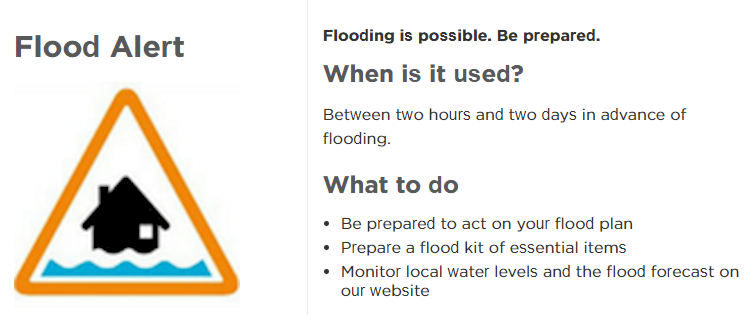
Flood Warning- Flooding of fields, recreation land and car parks; Flooding of minor road infrastructure (A (non-trunk) B, C & Unclassified); Farmland flooding (arable & pasture); Spray/wave overtopping on coast; Overland flow from rivers and streams; Localised flooding due to heavy storms.
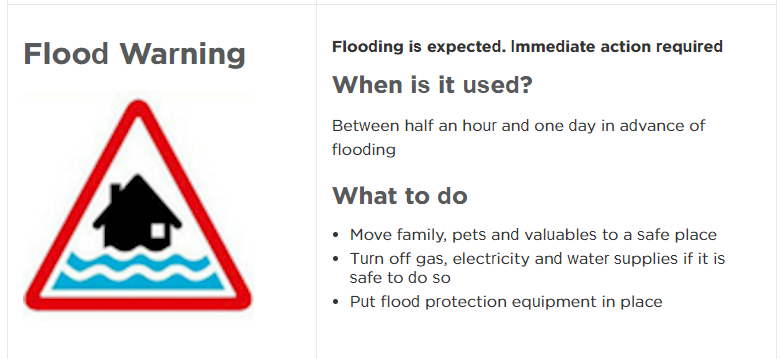
Severe Flood warning- Flooding of homes; Flooding of businesses; Flooding of cellars and basements; Flooding of underground rail stations and lines; Flooding to roads with Major impacts; Flooding to infrastructure; Wave/spray overtopping; Extensive flooding on floodplains (including caravan parks or campsites); Flooding of major tourist/recreational attractions.
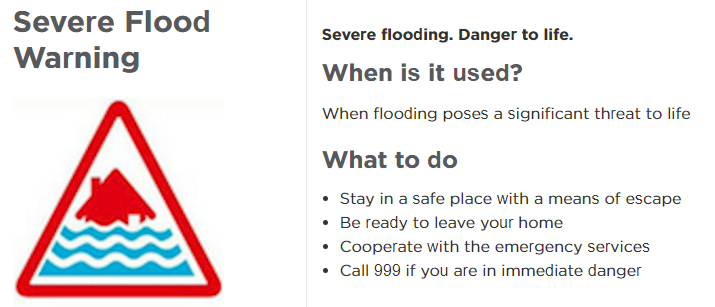
Severe Flood Warnings are used to warn of significant risk to life or significant disruption to communities caused by widespread or prolonged flooding where any of the following impacts are expected: Significant risk to life. Death or serious injury is a likely risk for people in the area. Significant disruption to communities. Loss of essential services which could result in harm to their health, or people are put at risk by the extent of flooding and the capability of emergency services and the authorities to cope with it.
There is lots of advice and guidance online about creating a flood plan, templates, what information to note down now, how to make a flood kit, what to do at various stages of a flood event. Each household will be different but having a plan could help a bit, even a lot in reducing the potentially devastating impacts of flooding. It might be that your home still floods but you could lessen the damage and save some things that are important or irreplaceable. Also, if it is shared with everyone in the house, then anyone could act on it fast. Teenagers revising at home for exams, any adult not just the person who wrote the plan and for a family, input from everyone gives more ideas
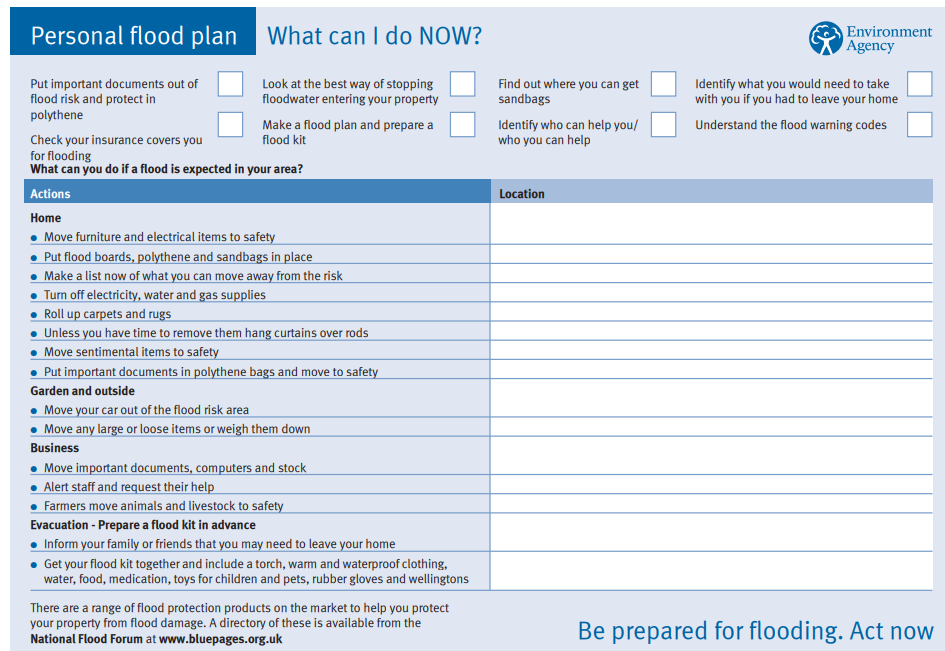
In November 2019 the River Don caused flooding around Doncaster resulting in seven Severe Flood warnings. People had to be rescued from their homes by boat, the flooding cut off areas. Sheffield, Worksop, Evesham and Tewkesbury have all seen very high river levels and flooding problems. In June, Wainfleet in Lincolnshire suffered from severe river flooding after another wet spell.
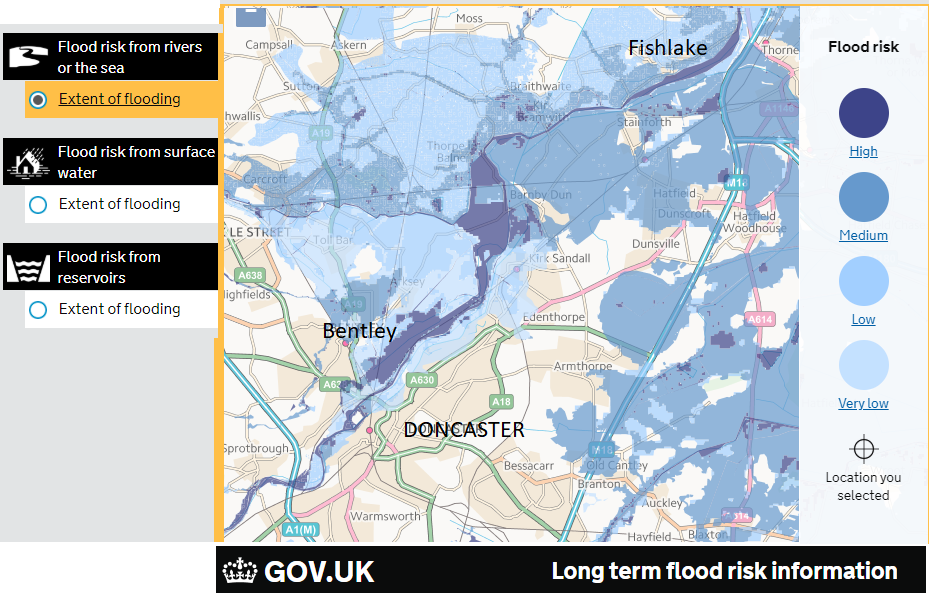
A Severe Flood Warning may be issued if any one of the following impacts were expected/required: Deep and fast-flowing flood water; Debris in the water that could cause death or injury; Potential/observed collapse of buildings/structures; Large town/city isolated by floodwaters with no obvious means of escape; Critical resources/infrastructure for communities disabled (no access to food, water, electricity); Large volumes of evacuees; Military intervention.
You don’t want to wait until the situation is this serious to be searching for numbers/documents/a torch/survival kit. Preparing a flood plan and sharing it could help.

Weather warnings
For the UK there are three levels of warning for severe weather Yellow, Amber and Red. Met Eireann use Orange instead of Amber.
The level for Met Office rain warnings is decided in conjunction with the Environment Agency considering what will happen on the ground, how the river levels are and catchment areas alongside how much rain is forecast. Time of day/day of the week also go into the warnings mixing pot and out comes a severe weather warning. In the Further Details section of the warning is a matrix. This shows Likelihood against Impacts, so how likely is heavy rain – Unlikely to Very likely and also what will be impacts of this severe weather be, if they do occur. Low impacts to Very High impacts.
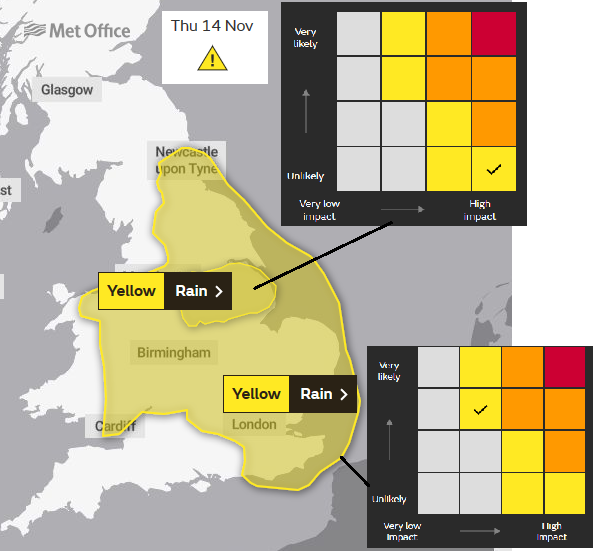
If a warning is issued several days in advance it may have a lower likelihood awaiting confidence to grow in the forecast. After widespread flooding, any extra water falling on sensitive areas could cause even more serious flooding, which could be reflected with lower likelihood but higher impacts. Yellow warning areas highlight places that are at risk, but it doesn’t mean that the whole of that area will be hit with heavy rain, especially in showery or thunderstorms situations.
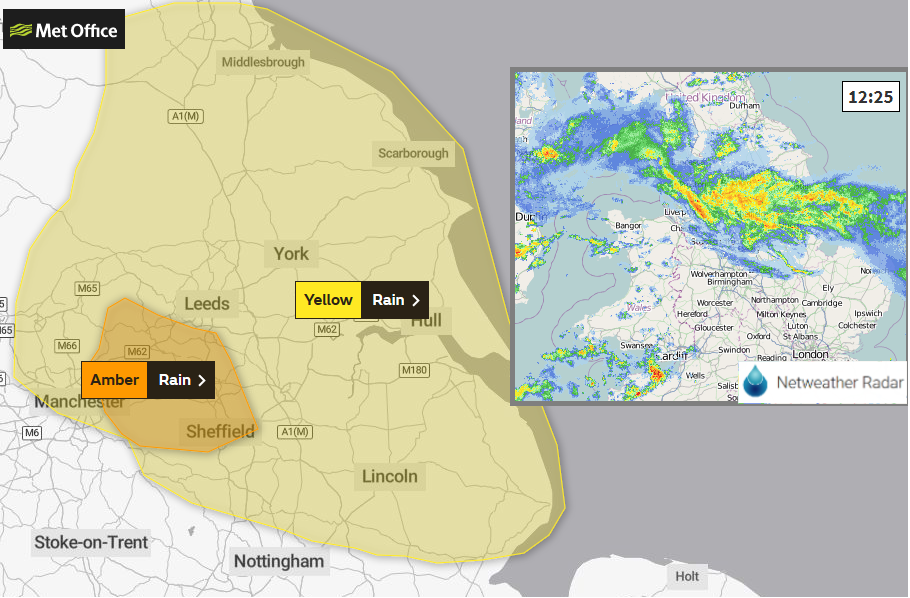
You can watch the progress of heavy showers or frontal rain on the Netweather Radar as it approaches. Also, don’t rely on a weather app where you get a series of hourly symbols. This is just pure model output, one solution. It does not explain any possible changes or confidence around the forecast. You need to find some added value from a forecaster to understand the bigger forecast picture if you are worried about the next rain event.
There is a lot of graphical information about river levels available, highest levels ever recorded, high risk of flooding maps along with the five-day outlook for England from the Environment Agency and Natural Resources Wales. These are updated late morning and SEPA sometimes issue information maps of Scotland for flooding situations on Twitter. Northern Ireland doesn’t have the same warning setup as there is across Britain.
Already places have had their wettest autumn on record when over half of November still left (autumn being defined as Sept, Oct, Nov for statistical purposes). There is standing water, brimming rivers, saturated ground and only a slow decrease in the number of flood warnings. The risk of flooding is still lurking, it is time for the Prepare part of this campaign. For those along the River Don in South Yorkshire and the other areas swamped this year, they have been through the Act and Survive part, they now have a long road to recovery through winter. Sign up for the flood warnings today.